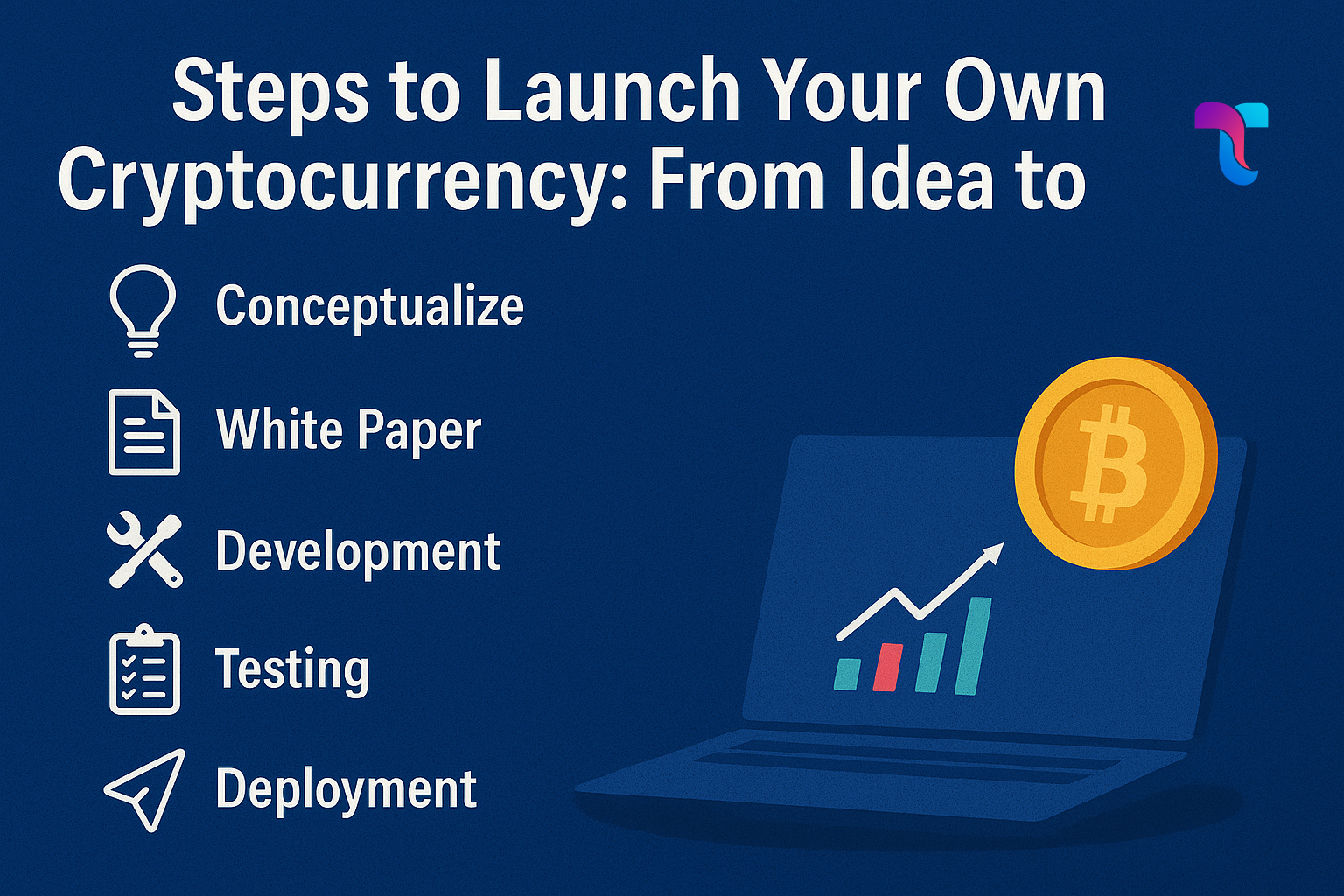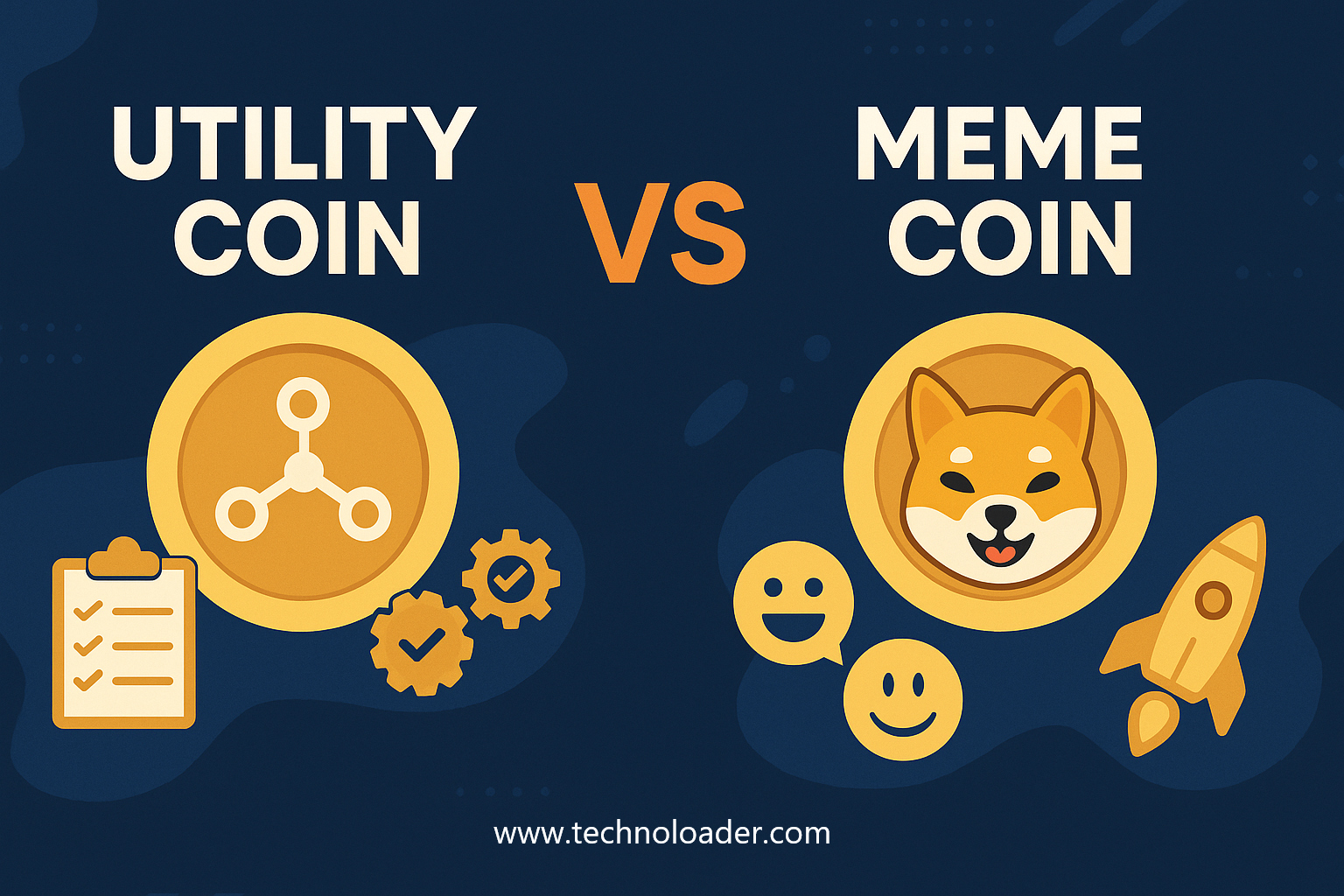Steps to Launch Your Own Cryptocurrency: From Idea to Deployment

In an era dominated by decentralized finance, NFTs, and tokenized assets, launching your own cryptocurrency has become more accessible than ever.
Whether you’re an entrepreneur, startup, or enterprise, creating a cryptocurrency opens doors to new revenue models, user engagement tools, and digital economies. However, this journey is not just technical, it involves deep planning, development, compliance, and promotion.
Let’s explore the full process from start to finish, highlighting every step you need to launch a secure and successful crypto coin or token.
Step-by-Step Guide to Cryptocurrency Creation
When you hire a top cryptocurrency development company, they follow the agile methodology while developing a digital platform. Below are the essential steps from idea to deployment that should be taken while build a cryptocurrency.
Step 1: Define the Purpose and Vision
Before writing a single line of code, the first step is identifying the purpose behind your cryptocurrency. What problem does it solve, and who is the target audience? Are you building a utility token for a DeFi app, a governance token for a DAO, or a gaming currency with in-game value?
Clarity on these points helps shape the token’s utility, longevity, and investor appeal. Projects that lack clear purpose often struggle with user retention, liquidity, and long-term relevance. Solidifying this vision early on also guides decisions around tokenomics, blockchain selection, and promotional strategies.
Step 2: Choose the Right Blockchain Platform
The next major decision is selecting the blockchain on which your cryptocurrency will run. You have two primary options: launch your own blockchain (which creates a coin) or build a token on an existing blockchain like Ethereum, BNB Smart Chain, Solana, or Polygon.
If speed and cost-efficiency are your priorities, a chain like Polygon or BNB may be ideal. For DeFi integration and broader adoption, Ethereum is often preferred. Creating your own blockchain offers complete customization but is far more resource-intensive and requires long-term maintenance. This choice also impacts scalability, transaction fees, development time, and security considerations.
Step 3: Design the Tokenomics
Once you’ve selected the blockchain, it’s time to map out the tokenomics, an essential step that defines how your cryptocurrency works within its ecosystem. Decide the total supply, allocation (team, investors, community), release schedule (vesting, lockups), and whether the token will have inflationary or deflationary mechanisms.
The goal is to ensure balanced distribution while maintaining demand and liquidity. Poorly structured tokenomics can cause price crashes, liquidity shortages, or loss of investor confidence. A well-designed economic model also supports long-term growth, sustainability, and fundraising through ICOs or IDOs.
Step 4: Develop the Smart Contract
With your tokenomics finalized, the technical phase begins with smart contract development. This contract defines your token’s rules minting, transferring, staking, burning, and more. If you’re using Ethereum, this will likely follow the ERC-20 or ERC-721 standard; if BNB Chain, BEP-20.
Make sure the smart contract is tested on testnets before mainnet deployment to eliminate bugs and vulnerabilities. You should also get a third-party smart contract audit to ensure it’s secure and follows best practices. Any flaw in the smart contract could lead to hacks, fund loss, or permanent token malfunction, so this step requires high-level expertise.
Step 5: Create a User-Friendly Wallet Interface
If you’re building a complete ecosystem, a branded wallet or dashboard is often needed to help users store, stake, or transfer your token. This interface should offer secure login, real-time balance tracking, gas fee estimation, and support for major wallets like MetaMask or Trust Wallet.
While not mandatory for every project, having your own crypto wallet app increases user convenience and brand visibility especially for gaming, DeFi, or e-commerce-based tokens. It can also serve as a base for future features like NFT integration, payment gateways, or reward systems.
Step 6: Ensure Regulatory Compliance
Depending on your jurisdiction, launching a cryptocurrency may require legal consultation to comply with local and international regulations. This includes Know Your Customer (KYC), Anti-Money Laundering (AML), and securities laws.
For instance, in the U.S., tokens that offer profit potential may be classified as securities and fall under SEC regulations. A legal misstep here could result in lawsuits, fines, or delisting from major exchanges. Work with blockchain-knowledgeable legal advisors to draft whitepapers, terms of service, and privacy policies to safeguard your project and its users.
Step 7: Launch the Token and Build Liquidity
Once development and auditing are complete, it’s time to launch your cryptocurrency. Start by deploying it on the selected blockchain and distributing tokens as per your initial plan. To enable trading, you’ll need to add liquidity to decentralized exchanges (DEXs) like Uniswap or PancakeSwap or pursue centralized exchange (CEX) listings.
Set up liquidity pools, enable staking mechanisms, or partner with launchpads for initial offerings. Your token launch is a crucial milestone combined with a well-planned marketing campaign to attract investors, users, and strategic partners.
Step 8: Promote and Grow Your Ecosystem
After launching, focus on continuous growth through community building, partnerships, updates, and transparency. Leverage social media, crypto forums, influencers, and press releases to boost awareness. Offer staking rewards, referral bonuses, or NFT integrations to drive long-term engagement.
Also, maintain regular developer updates and roadmap progress to build user trust. Projects that fade after launch often fail to engage communities or build sustainable utility. Keep evolving your token’s role and value proposition to remain competitive in the rapidly shifting crypto space.
How Much Does it Cost to Develop Cryptocurrency?
The total cryptocurrency development cost including launching depends on factors like blockchain type, features, security, and compliance. Here’s a detailed cost estimate to help plan your budget:
| Component | Estimated Cost (USD) | Details |
| Purpose Research & Planning | $1,000 – $5,000 | Business model, use case analysis, whitepaper writing |
| Blockchain Selection & Setup | $2,000 – $10,000 | Chain integration or setting up custom blockchain |
| Smart Contract Development | $3,000 – $8,000 | Token creation logic, vesting, minting, burning |
| Smart Contract Audit (Optional but Recommended) | $5,000 – $15,000 | External audit for vulnerabilities and exploits |
| Wallet/Dashboard Development | $4,000 – $15,000 | Web or mobile interface for token management |
| Legal Consultation & Compliance | $3,000 – $10,000 | KYC, AML, token classification, terms & conditions |
| Token Deployment (Gas Fees) | $100 – $1,000 | Mainnet deployment costs depending on blockchain |
| Marketing & Exchange Listing | $5,000 – $50,000+ | Promotions, influencer outreach, DEX/CEX listing fees |
| Total Estimated Cost Range | $23,000–$114,000+ |
These prices vary depending on your location, blockchain development partner, and whether you use a white-label platform or build from scratch.
Final Words
Launching your own cryptocurrency in 2025 is a powerful way to tap into decentralized innovation, but it requires detailed planning, secure development, and strategic growth.
From defining purpose and selecting a blockchain to writing secure smart contracts and promoting your token, every phase matters. With increasing competition in the crypto space, only projects with clear utility, strong tokenomics, and solid execution succeed in the long run.
Collaborating with an experienced crypto development company like Technoloader can significantly reduce risks and accelerate time-to-market, turning your crypto idea into a scalable digital asset.




